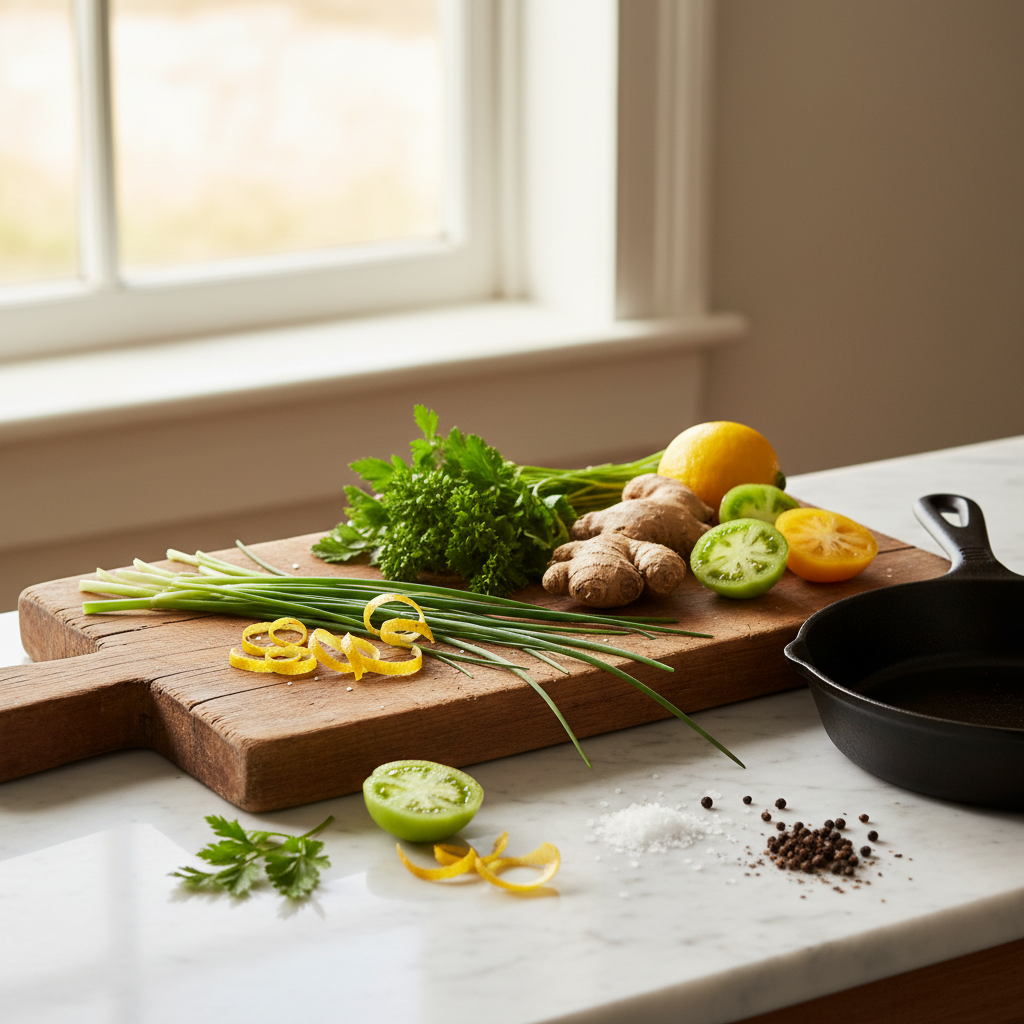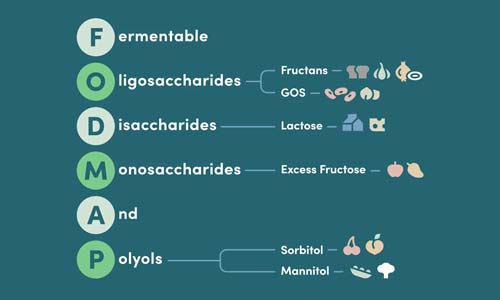Low FODMAP Sauces: The Ultimate Guide to Bold Flavor

Key Takeaways
- Low FODMAP sauces provide bold and gourmet flavors without triggering digestive discomfort.
- These sauces avoid fermentable carbohydrates such as garlic bulbs, onions, and certain thickeners.
- They allow individuals on a restricted diet to enjoy flavorful meals confidently.
- Carefully crafted low FODMAP condiments enhance the depth and complexity of dishes.
Table of Contents
- The Ultimate Guide to Low FODMAP Sauces: Enjoy Bold Flavor, Every Meal
- Low FODMAP Sauces 101: Science, Ingredients, and How They Support Gut Health
- Essential Guide: Low FODMAP Sauce Staples for Your Pantry
- Store-Bought vs. Homemade Low FODMAP Sauces: A Comparison Guide
- How to Convert Any Sauce Recipe to Low FODMAP: A Step-by-Step Playbook
- Thickening, Storing & Serving Low FODMAP Sauces: Practical Solutions
- Solution Center: Troubleshooting Common Low FODMAP Sauce Challenges
- The Best Low FODMAP Sauces & Brands: Gourmend and Beyond
- Resources & Next Steps: Empowering Your Flavorful Low FODMAP Kitchen
The Ultimate Guide to Low FODMAP Sauces: Enjoy Bold Flavor, Every Meal
Low FODMAP sauces transform restricted eating into an adventure of bold, gourmet flavors. These carefully crafted condiments avoid fermentable carbohydrates that trigger digestive discomfort, like garlic bulbs, onions, and certain thickeners, while delivering the depth and complexity every great dish deserves.
The magic lies in precision: serving size matters enormously on a low FODMAP journey. Two tablespoons of ketchup stays gentle on your system, but double that portion crosses into trigger territory. This guide reveals how to navigate sauce choices with confidence, from store-bought staples to homemade creations that never compromise on taste.
Quick Take: What Is a Low FODMAP Sauce?
A sauce made without high-FODMAP ingredients (garlic bulbs, onions, certain wheat-based thickeners) or used in tested serving sizes. Think chive sprigs instead of onions, garlic-chive stems instead of garlic cloves, and precise measurements to stay within your comfort zone.
At Gourmend Foods, we've mastered this balance through clean-label broths that use chives, scallion greens, and leek greens for onion-like depth, plus nori seaweed and oyster mushrooms for rich umami. Every product supports your digestive wellness without sacrificing the sophisticated flavors you crave.
Low FODMAP Sauces 101: Science, Ingredients, and How They Support Gut Health

FODMAPs (Fermentable Oligosaccharides, Disaccharides, Monosaccharides, and Polyols) are short-chain carbohydrates that resist digestion in the small intestine. When they reach the colon, gut bacteria ferment them rapidly, producing gas and drawing water into the bowel, triggering bloating, cramping, and irregular digestion for sensitive individuals.
Traditional sauce ingredients like garlic bulbs (fructans), onions (fructans), and wheat-based thickeners (fructans) rank among the highest FODMAP triggers. The solution isn't elimination, it's intelligent substitution. Chive sprigs deliver onion-like sharpness, garlic-chive stems provide aromatic depth, and green leek tops add savory complexity without the digestive chaos.
| High-FODMAP Trigger | Low FODMAP Substitute | Flavor Profile |
|---|---|---|
| Garlic bulbs/cloves | Garlic-chive stems | Mild garlic essence |
| Onions/shallots | Chive sprigs, green leek tops | Sharp, savory bite |
| Wheat flour thickeners | Rice flour, cornstarch | Clean, neutral thickening |
Serving size fundamentally alters FODMAP load. Ketchup contains small amounts of onion powder, under two tablespoons stays low FODMAP, but larger portions accumulate enough fructans to trigger symptoms. This principle applies across all low FODMAP sauces: precision protects your comfort zone.
Gourmend's shelf-stable broths exemplify this science-based approach, incorporating nori seaweed and oyster mushrooms for natural umami without relying on high-FODMAP aromatics. Each ingredient undergoes careful evaluation to ensure digestive gentleness without flavor compromise.
Essential Guide: Low FODMAP Sauce Staples for Your Pantry
Building a low FODMAP sauce collection requires strategic choices that maximize flavor versatility while respecting digestive boundaries. These curated staples transform simple ingredients into restaurant-quality dishes without the discomfort.
Gourmend Shelf-Stable Chicken Broth serves as your foundation for gravies, pan sauces, and deglazing. Use ½ cup per serving for rich, bone broth depth enhanced with chives and nori. The clean ingredient list eliminates guesswork while delivering complex umami that rivals traditional stocks.
Homemade garlic-infused oil aioli provides creamy richness for sandwiches and roasted vegetables. Combine 2 tablespoons garlic-infused olive oil with 1 egg yolk and lemon juice, the infusion process extracts flavor compounds while leaving problematic fructans behind. Limit portions to 2 tablespoons per serving.
Serving Size Guidelines
- Tomato-based sauces: ½ cup per serving
- Oil-based dressings: 2 tablespoons maximum
- Broth-based sauces: ½ to ¾ cup per portion
- Herb pestos: 2 tablespoons per serving
Citrus vinaigrettes using fresh lemon juice, olive oil, and chopped chives brighten salads and grilled proteins. The acidity enhances nutrient absorption while providing vitamin C and antioxidants. Mix equal parts lemon juice and olive oil, then whisk in chopped chives and a pinch of salt for a vibrant, gut-friendly dressing.
Store-Bought vs. Homemade Low FODMAP Sauces: A Comparison Guide
Store-bought and homemade low FODMAP sauces each offer distinct advantages depending on your priorities. Commercial options like Gourmend Foods' shelf-stable broths deliver consistent FODMAP safety with professional flavor profiles, while homemade sauces provide complete ingredient control and customization.
| Criteria | Store-Bought (Gourmend) | Homemade |
|---|---|---|
| FODMAP Safety | Professionally tested, guaranteed compliance | Requires careful ingredient verification |
| Preparation Time | Ready in seconds | 10-30 minutes active prep |
| Ingredient Transparency | Full disclosure, clean labels | Complete control over every ingredient |
| Flavor Complexity | Professional umami development | Customizable to personal taste |
| Storage Stability | Shelf-stable for months | Refrigerate 5-7 days maximum |
Gourmend's broths excel as sauce bases because they're formulated with chives, scallion greens, and nori seaweed, delivering onion and garlic depth without FODMAP triggers. For quick weeknight meals, these shelf-stable options eliminate guesswork while maintaining gourmet standards.
Choose homemade when you need specific flavor profiles or have multiple food sensitivities beyond FODMAPs. A simple garlic-infused olive oil vinaigrette takes 5 minutes and stores for one week, while Gourmend's broths can be enhanced with fresh herbs for immediate complexity. For a delicious homemade option, try this low FODMAP miso salmon recipe.
How to Convert Any Sauce Recipe to Low FODMAP: A Step-by-Step Playbook

Converting traditional sauce recipes requires systematic ingredient analysis and strategic substitutions. Start by identifying high-FODMAP culprits: onion powder, garlic cloves, wheat flour thickeners, and certain vinegars or sweeteners.
Step 1: Audit Your Recipe
List every ingredient and cross-reference with Monash University's FODMAP database. Common hidden triggers include "natural flavors" containing onion extract, modified food starch from wheat, and honey in quantities exceeding 1 teaspoon per serving.
Step 2: Apply Strategic Swaps
Replace onions with chive sprigs (1:1 ratio), garlic cloves with garlic-chive stems (2 teaspoons per clove), and wheat flour with rice flour or cornstarch. For umami depth, incorporate ingredients found in Gourmend's broths: nori flakes, oyster mushroom powder, or green leek tops.
Step 3: Test and Adjust
Prepare a small batch first, tasting for balance. Rice flour requires 2-3 minutes of simmering to eliminate raw taste, while cornstarch thickens immediately. Add acid (lemon juice or rice vinegar) to brighten flavors that may seem flat without traditional aromatics.
Example conversion: Transform classic marinara by replacing 1 diced onion with ½ cup chopped chive sprigs, 3 garlic cloves with 2 tablespoons garlic-chive stems, and enhancing with 1 teaspoon nori flakes for savory depth. For more inspiration, check out these low FODMAP broccoli sausage pasta ideas.
Thickening, Storing & Serving Low FODMAP Sauces: Practical Solutions
Proper thickening techniques ensure low FODMAP sauces achieve restaurant-quality texture without problematic ingredients. Rice flour, cornstarch, and small amounts of oats (under ¼ cup per serving) provide excellent thickening power while remaining gentle on digestion.
Rice flour creates silky, stable sauces when whisked into cold liquid before heating. Use 1 tablespoon per cup of liquid, simmer for 3-4 minutes to cook out any grittiness. Cornstarch works instantly, create a slurry with equal parts starch and cold water, then whisk into simmering sauce. Arrowroot powder thickens at lower temperatures, perfect for delicate cream sauces.
Storage requires attention to food safety, especially with garlic-infused oils. Refrigerate all homemade sauces within 2 hours of preparation. Oil-based sauces last 5-7 days maximum, while broth-based sauces keep 7-10 days. Freeze portions in ice cube trays for convenient single-serving access, frozen sauce cubes last 3 months.
When reheating, add liquid gradually to restore consistency. Frozen sauces may separate, whisk vigorously or blend briefly to re-emulsify. Taste and adjust seasoning after reheating, as flavors can mute with temperature changes.
Solution Center: Troubleshooting Common Low FODMAP Sauce Challenges
Even when following low FODMAP sauces guidelines carefully, digestive symptoms can still occur. The most common culprits are hidden FODMAP ingredients, incorrect serving sizes, or cross-contamination during preparation.
Hidden FODMAP additives appear in unexpected places. Worcestershire sauce often contains high-FODMAP molasses or onion powder. Barbecue sauces frequently include high-fructose corn syrup beyond safe limits. Always scan ingredient lists for garlic powder, onion extract, or wheat-based thickeners. For more on the science behind FODMAPs, see Monash University's overview of the low FODMAP diet.
Cross-contamination happens when using utensils or cutting boards that previously touched high-FODMAP ingredients. Garlic residue on knives or onion oils on cutting surfaces can trigger symptoms even in trace amounts. Wash all equipment thoroughly before preparing low FODMAP sauces.
Are all tomato sauces low FODMAP? Plain tomato sauce without added garlic or onion is generally safe in 2-tablespoon servings. However, many commercial varieties include onion powder or garlic extract for flavor enhancement. Always verify the ingredient list and stick to measured portions.
Can low FODMAP sauces be frozen? Yes, most sauces freeze well for up to 2 months. Oil-based sauces may separate but re-emulsify when whisked after thawing. Avoid freezing mayo-based sauces, as they break permanently.
What if you still react? Scale back to half-servings and focus on single-ingredient bases like plain tomato sauce or simple vinaigrettes. Consult the Monash FODMAP app for updated serving size guidelines, as research continues to refine safe portions.
The Best Low FODMAP Sauces & Brands: Gourmend and Beyond

Gourmend Foods stands as the gold standard for low FODMAP sauces and broth-based foundations, offering clean-label ingredients without compromise on flavor complexity.
Gourmend Shelf-Stable Broths - Ultimate Sauce Foundation
Best for: Pan sauces, gravies, and reduction bases
Gourmend's chicken and beef bone broths use chive sprigs, scallion greens, and leek greens for onion-like depth, while nori seaweed and oyster mushrooms deliver rich umami without FODMAP triggers. The vegetable broth maintains the same flavor-building approach, creating complex taste profiles that rival traditional high-FODMAP bases.
Why it stands out: Unlike generic boxed broths that rely on onion and garlic powders, Gourmend's formulations achieve sophisticated flavor through carefully selected low FODMAP ingredients. Each carton provides consistent results for sauce-making without digestive concerns.
| Sauce Type | Best Application | Safe Serving | Flavor Profile |
|---|---|---|---|
| Gourmend Chicken Broth | Pan sauces, gravies | ½ cup as base | Rich, savory, umami-forward |
| Homemade Garlic Oil | Pasta, vegetables | 2 tablespoons | Aromatic, mild garlic essence |
| Plain Tomato Sauce | Pizza, pasta | 2 tablespoons | Bright, acidic, versatile |
| Dijon Mustard | Dressings, marinades | 1 tablespoon | Sharp, tangy, pungent |
Store-bought considerations: Many commercial sauces contain acceptable ingredients but exceed safe FODMAP loads in typical serving sizes. Ketchup works in small amounts, but most people use 3-4 tablespoons per serving, double the safe limit.
Homemade advantages: Creating sauces from scratch allows precise control over ingredients and FODMAP content. Garlic-infused olive oil, made by heating whole garlic cloves in oil then removing them, provides garlic flavor without FODMAPs. Fresh herb-based sauces like chimichurri offer bold taste using only safe ingredients. For a hearty meal, try these low FODMAP braised short ribs.
Resources & Next Steps: Empowering Your Flavorful Low FODMAP Kitchen
Building confidence with low FODMAP sauces requires reliable resources and systematic practice. Start with these foundational tools and gradually expand your repertoire.
Essential Resources:
- Gourmend Foods Low FODMAP Recipes – Tested sauce recipes using Gourmend broths
- Gourmend Recipe Conversion Tool – Transform any sauce recipe to low FODMAP
- Monash University FODMAP app – Updated serving size guidelines and ingredient safety data
Measurement precision matters: Australian tablespoons measure 20ml versus 15ml for US tablespoons. When following international recipes, convert measurements to ensure accurate FODMAP loads. Digital kitchen scales provide the most reliable consistency.
Frequently Asked Questions
What ingredients are commonly avoided in low FODMAP sauces and what substitutes are used instead?
Low FODMAP sauces avoid high-FODMAP ingredients like garlic bulbs, onions, shallots, and certain wheat-based thickeners. Instead, they use substitutes such as chive sprigs for onions and garlic-chive stems for garlic, which provide similar savory depth without triggering digestive discomfort.
How does serving size impact the safety of consuming low FODMAP sauces?
Serving size is crucial because even low FODMAP ingredients can become problematic if consumed in large amounts. For example, two tablespoons of ketchup might be gentle on digestion, but doubling that portion could introduce enough fermentable carbs to cause symptoms. Precision in portion control helps maintain digestive comfort.
What are some practical tips for thickening and storing low FODMAP sauces without triggering digestive issues?
Use low FODMAP thickeners like cornstarch or rice flour instead of wheat-based options. Store sauces in airtight containers in the refrigerator and consume them within a few days to maintain freshness and safety. Reheating gently helps preserve texture and flavor without compromising gut comfort.
How do low FODMAP sauces support gut health while still providing bold and complex flavors?
Low FODMAP sauces avoid fermentable carbs that can cause bloating and discomfort, making digestion easier. They achieve bold, complex flavors by using ingredients like garlic-chive stems, chives, scallion greens, and umami-rich elements such as nori seaweed and oyster mushrooms, ensuring meals are both gut-friendly and gourmet.





